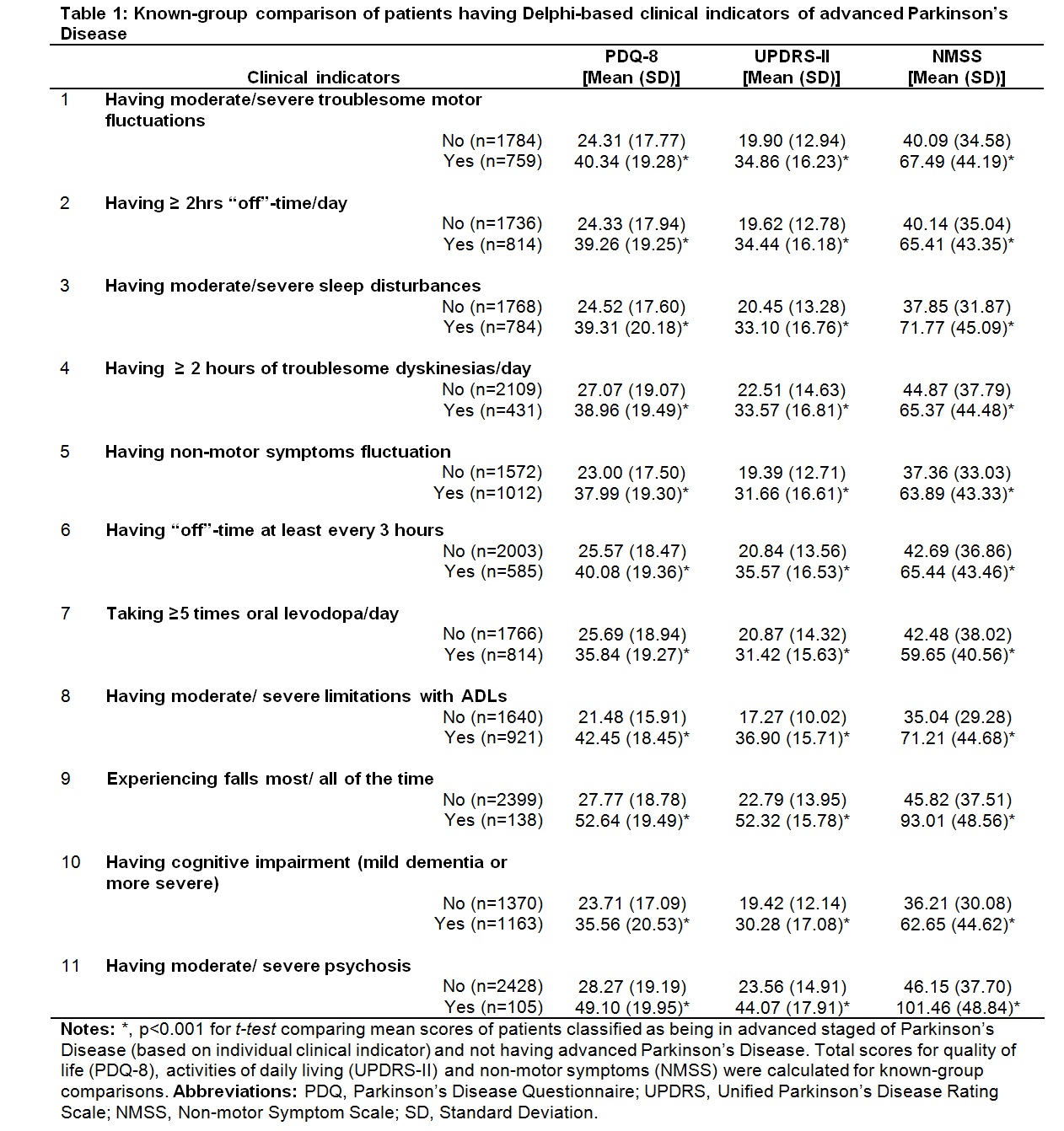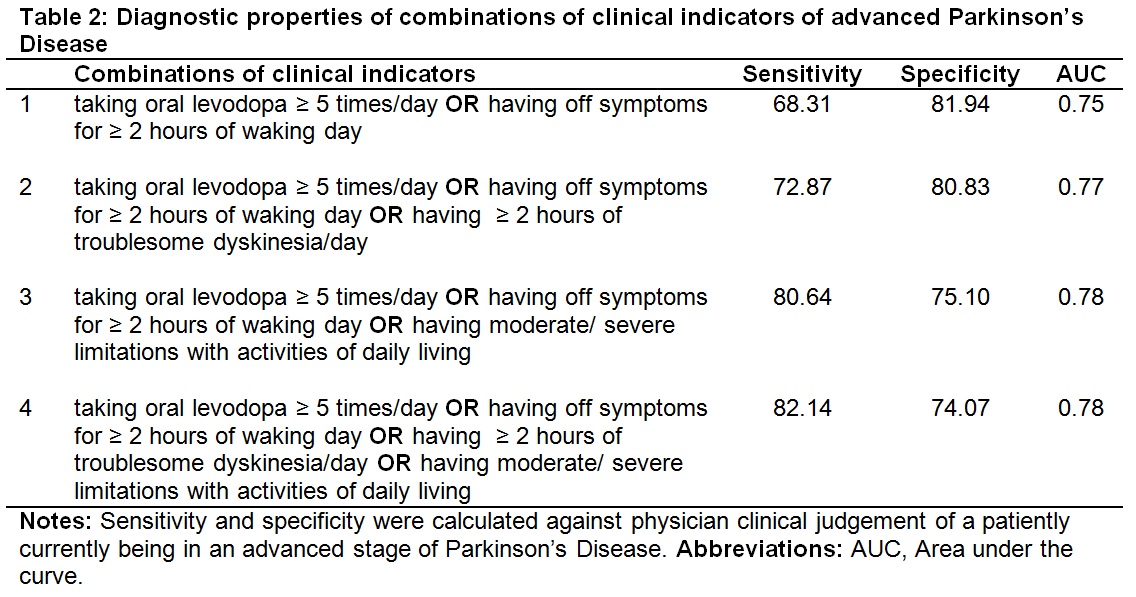Session Information
Date: Sunday, October 7, 2018
Session Title: Phenomenology and Clinical Assessment Of Movement Disorders
Session Time: 1:45pm-3:15pm
Location: Hall 3FG
Objective: To measure the diagnostic properties of clinical indicators of advanced Parkinson Disease (APD).
Background: Lack of consensus to define APD may lead to delay in diagnosis and initiation of optimal treatment. Global consensus on clinical characteristics of APD can improve timely recognition and access to more advanced options.
Methods: Retrospective analyses were conducted on a cross-sectional, multi-country observational study conducted to characterize APD patients.1 Health status and symptoms of individuals with PD were evaluated based on clinician assessment and patient self-reporting.1Patients were also evaluated for clinical characteristics of APD as identified by a previous global Delphi-based consensus study.2 The relative performance of the clinical characteristics (individual and combination) was compared based on receiver operating characteristic curves, sensitivity and specificity. Discriminant validity was measured based on comparing mean scores on quality of life, activities of daily living and non-motor symptoms.
Results: The sample (n=2,595) included 51.56% subjects classified as APD by experienced physicians. Of the APD patients, 65.84% (n=881) were considered candidates for device-aided therapies. Delphi-based clinical indicators demonstrated good discriminant ability [Table 1].The top-performing individual indicators of APD included: (i) having moderate/severe limitations with activities of daily living (AUC:0.72), (ii) having moderate/severe troublesome motor fluctuations (AUC:0.72), (iii) taking oral levodopa ≥5 times/day (AUC:0.71), (iv) having “off” symptoms for ≥2 hours of waking day (AUC:0.70), (v) having non-motor symptoms fluctuation (AUC:0.68), (vi) having “off” time at least every 3 hours (AUC:0.66), and (vii) having ≥2 hours of troublesome dyskinesias/day (AUC:0.63). Combinations of objective clinical indicators like frequency of oral levodopa and duration of motor symptoms also demonstrated improved diagnostic performance compared to individual indicators [Table 2].
Conclusions: Objective measures may aid in addressing heterogeneity in clinical practice. Validated clinical indicators may provide practical approaches for uniform screening and identification of APD inadequately controlled on oral medications, which could lead to timely intervention and improved health outcomes.
References: 1 Fasano A et al. (2017) ‘Advanced’ Parkinson’s disease characteristics in clinical practice: results from the OBSERVE-PD study, a cross-sectional observational study of 2615 patients. Neurology, 88 (16 Supplement) P6.001. 2 Antonini A et al. (2015) Implementing a Delphi panel to improve understanding of patient characteristics of advanced Parkinson’s disease. Movement Disorders;30 Suppl 1:2072.
To cite this abstract in AMA style:
P. Odin, Z. Pirtosek, R. Rodriguez, P. Martinez-Martin, D. Shah, P. Kandukuri, O. Koray, J. Zamudio, Y. Bao, Y. Jalundhwala, A. Antonini. Clinical indicators of advanced Parkinson’s disease: Evaluating diagnostic properties from retrospective analysis of multi-country, cross-sectional observational study [abstract]. Mov Disord. 2018; 33 (suppl 2). https://www.mdsabstracts.org/abstract/clinical-indicators-of-advanced-parkinsons-disease-evaluating-diagnostic-properties-from-retrospective-analysis-of-multi-country-cross-sectional-observational-study/. Accessed December 28, 2025.« Back to 2018 International Congress
MDS Abstracts - https://www.mdsabstracts.org/abstract/clinical-indicators-of-advanced-parkinsons-disease-evaluating-diagnostic-properties-from-retrospective-analysis-of-multi-country-cross-sectional-observational-study/


